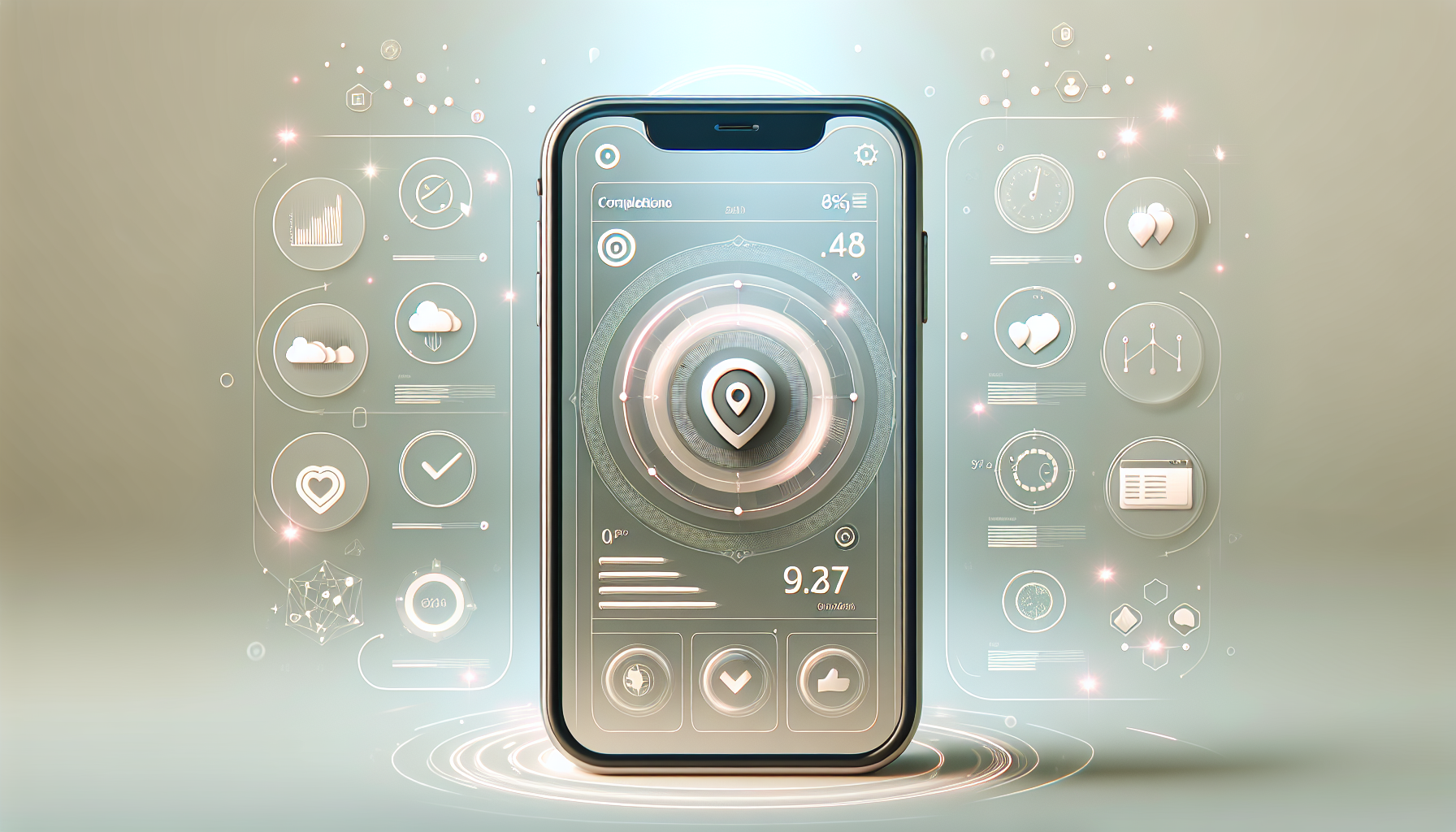Creating interactive mobile learning experiences can feel like trying to juggle while riding a unicycle—challenging and a bit wobbly! You might be wondering how to keep learners engaged on a small screen, or how to make learning feel less like a chore and more like an adventure.
But don’t worry! If you stick around, I promise you’ll uncover some straightforward steps that will transform your approach to mobile learning. We’ll dive into understanding your audience, choosing the right tools, designing content, and much more.
By the end, you’ll have a solid roadmap to crafting dynamic and effective mobile learning experiences that keep your learners coming back for more. Let’s get started!
Key Takeaways
- Understand your audience through surveys and create learner personas to tailor content.
- Choose mobile-friendly tools like Articulate Storyline, Adobe Captivate, and Moodle to deliver diverse content.
- Design engaging content with short texts, visuals, and interactive elements like quizzes to enhance retention.
- Implement interactive features such as gamification and discussion forums to increase engagement and community.
- Gather feedback through usability testing and surveys to refine your mobile learning experience.
- Measure success by defining learning objectives and using analytics to track metrics like completion rates.
- Follow best practices like mobile-first design and regular content updates to keep learners engaged.
- Stay updated with trends like AR, VR, AI, and microlearning to enhance mobile learning’s effectiveness.

Steps to Create Interactive Mobile Learning Experiences
Understanding Your Audience and Their Needs
Getting to know your audience is key in creating effective mobile learning experiences.
Start by identifying who your learners are, their backgrounds, and what they really want to achieve.
Surveys, interviews, and focus groups are great ways to gather insights about their preferences.
For example, if you’re targeting busy professionals, they might prefer bite-sized lessons they can complete during breaks.
Also, consider their comfort level with technology; you want to ensure your platform meets their skills.
Once you’ve gathered this data, create learner personas to tailor your content accordingly.
This way, you can make learning relevant and engaging, which is vital since 75% of employees prefer to learn on their mobile devices.
Choosing the Right Mobile Learning Tools
Selecting the right tools can make or break your mobile learning experience.
First, think about the types of content you want to deliver. Is it videos, quizzes, or interactive simulations?
Tools like Articulate Storyline, Adobe Captivate, and Moodle are popular options that cater to various needs.
Make sure the platform you choose is mobile-friendly, allowing learners to access materials from anywhere.
Check for features like offline access, push notifications, and easy content sharing.
Lastly, consider the costs and your budget; there are many free or affordable options available for small businesses.
Designing Engaging Content for Mobile Devices
Content is king, and when it comes to mobile learning, it needs to be engaging.
Keep text short and to the point, breaking up information into digestible chunks.
Use visuals like images, infographics, and videos; they often convey complex information more effectively than text.
Don’t forget about interactive elements! Quizzes, polls, and gamified content can increase retention rates by up to 25-60%.
Designing for touch screens is crucial too; ensure buttons are large enough and spaced appropriately for easy navigation.
Remember, mobile learners often appreciate personalized learning paths, so think about how to customize content based on user preferences.
Implementing Interactive Features and Activities
Adding interactive features makes your mobile learning experience more engaging.
Consider integrating activities like simulations, quizzes, and scenarios that allow learners to apply what they’ve learned immediately.
Technology gives us the ability to use gamification; badges and leaderboards can motivate learners to keep progressing.
Interactive features like discussion forums can also enrich the learning experience by fostering community and collaboration.
Don’t overlook the data—analyzing learner interactions can provide valuable insights for future improvements.
Having these interactive elements can boost completion rates by more than 45%, so it’s well worth the effort.

Testing and Feedback for Continuous Improvement
Testing and gathering feedback are vital for refining your mobile learning experience.
Start by conducting usability testing with a small group of learners to identify any issues.
Encourage participants to think aloud as they navigate the course; you’ll gain insights into their thought process.
Utilize feedback surveys at the end of the course to get a sense of what worked and what didn’t.
Ask specific questions about content clarity, interactive elements, and overall experience.
For instance, a short survey asking, “What would you like to see improved?” can yield actionable insights.
Don’t just collect feedback; act on it. Implement the changes and retest the material if necessary.
Iterative improvements help in adapting to learner needs, ultimately enhancing engagement and retention.
Remember, 70% of respondents felt more motivated when they could provide feedback during their learning journey.
Measuring Success and Learning Outcomes
Tracking success in mobile learning is essential to ensure your initiatives are effective.
Start by defining clear learning objectives before launching your course.
Use metrics like completion rates and quiz scores to gauge your content’s impact.
For example, a 45% increase in completion rates can often be attributed to aligning your learning tools with audience needs.
Another great way to measure success is through analytics tools that track learner engagement.
Look for patterns in active participation or content drop-off points to understand where learners lose interest.
Feedback isn’t limited to surveys; keep an eye on social interaction metrics, like forum posts or comments.
Encourage learners to self-assess their progress as well; this self-reflection can reinforce knowledge and boost confidence.
Ultimately, measuring these factors will help you illustrate the course’s value—90% of educators agree mobile learning apps improve student grades.
Best Practices for Mobile Learning Design
Implementing best practices can elevate your mobile learning experience significantly.
Firstly, prioritize a mobile-first design. It should be intuitive and easy to navigate on small screens.
Ensure your content is structured logically to guide learners seamlessly through the material.
Keep your graphics optimized for mobile devices so that pages load quickly and look great.
Incorporate multimedia elements thoughtfully; too much can be overwhelming, while too little can lead to disengagement.
Consider the use of responsive design templates to ensure your course adjusts beautifully across devices.
Don’t forget to simplify processes where possible; users should be able to log in, engage, and complete modules without frustration.
Regularly update content to stay relevant—leaners appreciate fresh information, which can keep drop-off rates lower.
Staying ahead with best practices ensures learners remain engaged; 72% of participants reported increased engagement with mobile learning.
Future Trends in Mobile Learning
The landscape of mobile learning is rapidly evolving, and being aware of future trends can set you apart.
One major trend is the incorporation of augmented reality (AR) and virtual reality (VR) into learning experiences.
These technologies can create immersive environments, allowing learners to practice skills in a simulated setting.
Artificial Intelligence (AI) is also shaping mobile learning, personalizing the learning path based on individual progress.
Imagine a chatbot that offers real-time assistance or adaptive learning platforms that tailor content to user strengths!
Another trend is the rise of microlearning, which caters to short attention spans by breaking down learning into bite-sized modules.
This approach aligns well with the fact that 64% of learners find mobile access essential for training.
Social learning is gaining traction, as well. Learners want to connect, collaborate, and share experiences.
These future trends are not merely fads; they can foster deeper engagement and greater retention when executed properly.

Measuring Success and Learning Outcomes
Tracking success in mobile learning is essential to ensure your initiatives are effective.
Start by defining clear learning objectives before launching your course.
Use metrics like completion rates and quiz scores to gauge your content’s impact.
For example, a 45% increase in completion rates can often be attributed to aligning your learning tools with audience needs.
Another great way to measure success is through analytics tools that track learner engagement.
Look for patterns in active participation or content drop-off points to understand where learners lose interest.
Feedback isn’t limited to surveys; keep an eye on social interaction metrics, like forum posts or comments.
Encourage learners to self-assess their progress as well; this self-reflection can reinforce knowledge and boost confidence.
Ultimately, measuring these factors will help you illustrate the course’s value—90% of educators agree mobile learning apps improve student grades.
Best Practices for Mobile Learning Design
Implementing best practices can elevate your mobile learning experience significantly.
Firstly, prioritize a mobile-first design. It should be intuitive and easy to navigate on small screens.
Ensure your content is structured logically to guide learners seamlessly through the material.
Keep your graphics optimized for mobile devices so that pages load quickly and look great.
Incorporate multimedia elements thoughtfully; too much can be overwhelming, while too little can lead to disengagement.
Consider the use of responsive design templates to ensure your course adjusts beautifully across devices.
Don’t forget to simplify processes where possible; users should be able to log in, engage, and complete modules without frustration.
Regularly update content to stay relevant—leaners appreciate fresh information, which can keep drop-off rates lower.
Staying ahead with best practices ensures learners remain engaged; 72% of participants reported increased engagement with mobile learning.
Future Trends in Mobile Learning
The landscape of mobile learning is rapidly evolving, and being aware of future trends can set you apart.
One major trend is the incorporation of augmented reality (AR) and virtual reality (VR) into learning experiences.
These technologies can create immersive environments, allowing learners to practice skills in a simulated setting.
Artificial Intelligence (AI) is also shaping mobile learning, personalizing the learning path based on individual progress.
Imagine a chatbot that offers real-time assistance or adaptive learning platforms that tailor content to user strengths!
Another trend is the rise of microlearning, which caters to short attention spans by breaking down learning into bite-sized modules.
This approach aligns well with the fact that 64% of learners find mobile access essential for training.
Social learning is gaining traction, as well. Learners want to connect, collaborate, and share experiences.
These future trends are not merely fads; they can foster deeper engagement and greater retention when executed properly.
FAQs
Key steps include understanding your audience, selecting appropriate tools, designing engaging content, implementing interactive features, testing for feedback, measuring success, and adopting best practices.
Choosing the right tools involves evaluating features, usability, compatibility with mobile devices, support options, and scalability to ensure they meet your audience’s learning needs effectively.
Best practices include optimizing for small screens, using concise text, incorporating multimedia elements, making navigation intuitive, and ensuring interactivity to keep learners engaged.
Success can be measured through learner engagement metrics, completion rates, assessments scores, user feedback, and tracking learning outcomes to evaluate effectiveness and areas for improvement.
